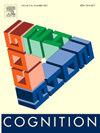语境中的时空视觉统计学习。
IF 2.8
1区 心理学
Q1 PSYCHOLOGY, EXPERIMENTAL
引用次数: 0
摘要
视觉统计学习(Visual Statistical Learning, VSL)通常以一种有限的形式进行研究,无论是作为时间的还是空间的VSL,并且由于上下文而没有任何影响或偏见。然而,在现实世界的环境中,空间模式随着时间的推移而展开,导致空间和时间规律之间的基本交织。此外,他们的解释还受到语境信息的严重影响,这些信息通过不同尺度的内部偏见编码而产生。使用一种新颖的时空VSL设置,我们通过在存在或不存在遮挡物的情况下,随着时间的推移在参与者的视野内外移动空间定义的模式,探索了时间、空间和偏差之间的相互依存关系。首先,我们在这种混合设置中复制了经典的VSL结果。接下来,我们获得了纯粹的时间统计可以通过内部推理用于学习空间模式的证据。最后,我们发现运动定义的和闭塞相关的上下文共同且强烈地调制,从相同的视觉输入中自动学习时空规律。总体而言,我们的研究结果将VSL的概念从单一视觉元素的低水平时空共现统计的机械记录扩展到一个复杂的解释过程,该过程将低水平时空信息与更高水平的内部偏差相结合,以推断环境的一般潜在结构。本文章由计算机程序翻译,如有差异,请以英文原文为准。
Spatio-temporal visual statistical learning in context
Visual Statistical Learning (VSL) is classically investigated in a restricted format, either as temporal or spatial VSL, and void of any effect or bias due to context. However, in real-world environments, spatial patterns unfold over time, leading to a fundamental intertwining between spatial and temporal regularities. In addition, their interpretation is heavily influenced by contextual information through internal biases encoded at different scales. Using a novel spatio-temporal VSL setup, we explored this interdependence between time, space, and biases by moving spatially defined patterns in and out of participants' views over time in the presence or absence of occluders. First, we replicated the classical VSL results in such a mixed setup. Next, we obtained evidence that purely temporal statistics can be used for learning spatial patterns through internal inference. Finally, we found that motion-defined and occlusion-related context jointly and strongly modulated which temporal and spatial regularities were automatically learned from the same visual input. Overall, our findings expand the conceptualization of VSL from a mechanistic recorder of low-level spatial and temporal co-occurrence statistics of single visual elements to a complex interpretive process that integrates low-level spatio-temporal information with higher-level internal biases to infer the general underlying structure of the environment.
求助全文
通过发布文献求助,成功后即可免费获取论文全文。
去求助
来源期刊

Cognition
PSYCHOLOGY, EXPERIMENTAL-
CiteScore
6.40
自引率
5.90%
发文量
283
期刊介绍:
Cognition is an international journal that publishes theoretical and experimental papers on the study of the mind. It covers a wide variety of subjects concerning all the different aspects of cognition, ranging from biological and experimental studies to formal analysis. Contributions from the fields of psychology, neuroscience, linguistics, computer science, mathematics, ethology and philosophy are welcome in this journal provided that they have some bearing on the functioning of the mind. In addition, the journal serves as a forum for discussion of social and political aspects of cognitive science.
 求助内容:
求助内容: 应助结果提醒方式:
应助结果提醒方式:


